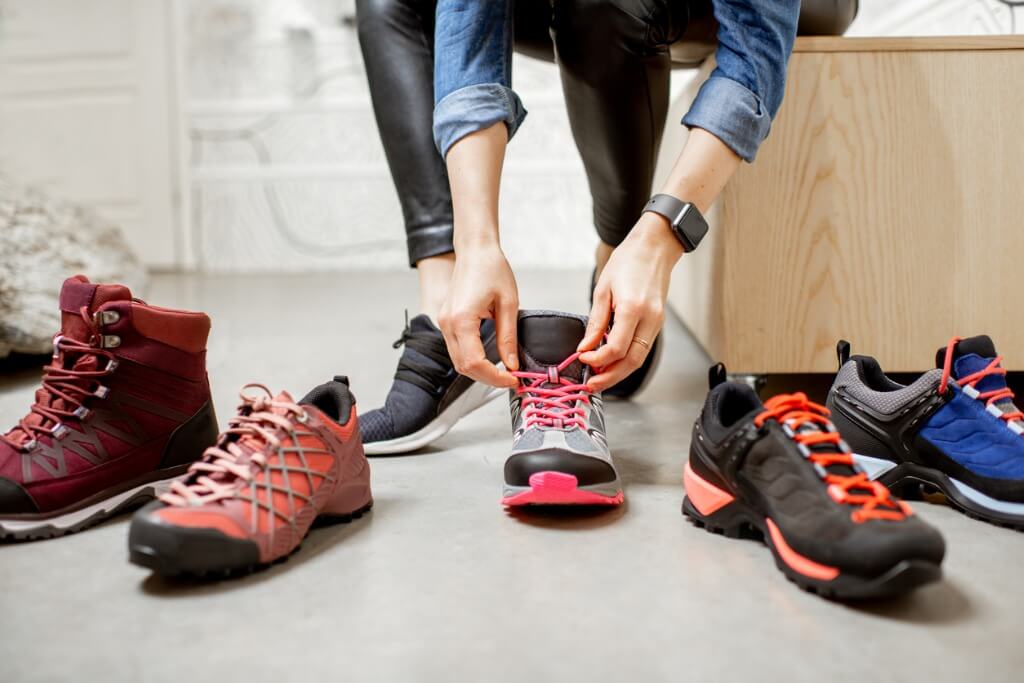
Does the cooler weather seem to bring about pain in your feet, knees, or lower back? As the leaves begin to change, many people suffer from aches and pains that they did not have before the summer. These symptoms have little to do with the changing weather. Instead, they are the direct result of a summer of unsupportive footwear.
The five dollars spent on flip-flops in the spring often results in hundreds of dollars spent on rehabbing injuries through the fall and winter months. You can do some simple things to break this cycle and keep you walking and running pain-free throughout the year.
Choose Support Over Style or Convenience
Choosing the right shoe is a challenge for many people. The balance between style, convenience, and function needs careful consideration. While it may be more convenient to wear flip-flops in summer or moccasins in the fall or winter, switching to a better shoe when walking your dog, riding your bike, or heading to the grocery store can prevent sore feet. You should also keep in mind the kind of shoe you are (or aren’t) wearing around the house.
We tend to underestimate how much time we spend on our feet in our homes, especially in the kitchen, where hard tiled floors are standard. Wearing the wrong shoe will lead to strain and overuse injuries, so make sure you choose indoor shoes with good support and wear activity-specific footwear whenever possible.
Don’t Be Fooled by the Shoe Size
Finding the correct shoe size isn’t as simple as you may think. There is no standardised system for shoe sizes in North America. The numbers are more of a general guideline and can vary up to two sizes for the same number. Since this fact is not well understood, people often buy improperly fitted shoes, opting for the shoe size they last wore by default.
To ensure you are wearing the correct shoe size, make sure there is a pinky finger width at the toe end of the shoe and that the sides do not squish or pinch any part of your foot. When buying a new pair of shoes, try two or three sizes of a specific shoe before finalizing your purchase.
Test the Shank
There are three main things to look for when ensuring a shoe has good support. First, the heel needs to be thicker than the toe, requiring you to find shoes with slightly raised heels. Very flat shoes can cause the foot to work harder while standing and walking. By keeping the heels raised, you will increase your foot’s stability and performance when walking and running. Second, make sure the shoe has a stiff shank (the shank is the middle part of the shoe’s sole). Flip the shoe over, grab the heel with one hand and the forefoot with the other, and try to twist the shoe’s middle. If it bends like a cooked lasagna noodle, put the shoe back.
A stiff shank will support the foot while walking and make the shoe last a lot longer. Finally, look for laces or buckles. These fasteners will allow a person to tighten specific areas of the shoe that need more support. Slip-on shoes tend to get sloppier as they age, whereas a laced shoe can be tightened so that it continues to fit snug and maintains better support as the shoe wears down.

Avoid the Barefoot Myth
There is an ongoing debate on the benefits of barefoot walking and running. The barefoot advocates point out that going without shoes will allow the foot to move more naturally, which, in turn, will help to strengthen the foot’s musculature. Had we lived and walked on different terrain, this may have been true. In North America, however, most of our walking is done on hard surfaces that are entirely flat, which does not stimulate muscle growth or intrinsic foot strength. Thus, we need shoes that provide more contour and support.
If you or someone you know is suffering from aching feet, sore knees, or back pain, you might consider evaluating the footwear before visiting the doctor. Using the four simple suggestions above can make a big difference in overall comfort and health. Remember to equip yourself with the appropriate footwear for both indoors and outdoors so you can avoid injury and maintain a healthy and active lifestyle.



